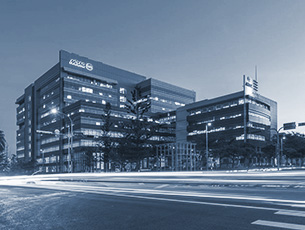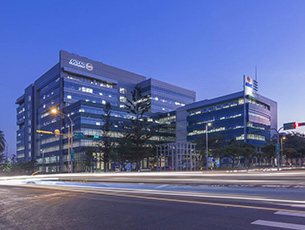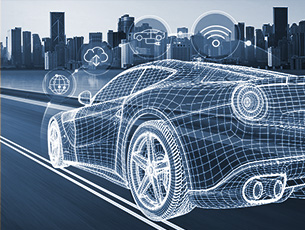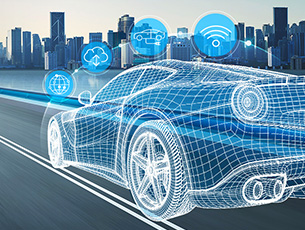Green Product Design
Facing the increasingly severe challenges of global warming and energy and resources depletion, MiTAC engages in product eco-design to reduce the environmental impact of products. Based on international environmental protection laws and regulations and customer requirements, we include energy conservation, materials reduction, ease of disassembly and waste recovery simplification in product design. In the control of hazardous chemical substances, we set short- and medium-term goals for the reduction of hazardous substances, reduce environmental impacts in the manufacturing process, establish the environmental management system and develop various environmental management SOPs to control the waste produced and energy/resources used in the process.
In addition to the existing foundation, we continued to promote the concept of circular economy in 2022 to progressively realize our green commitment in CSR.

The Company abides by the applicable national/international laws and the code of ethics. In the regions where we operate, we promote fair competitions, ensure the safety of products and services for customers, comply with labor laws and practices, the Universal Declaration of Human Rights and international standards, and protect copyright. The Company’s assets and all forms of intellectual property rights are aligned with the regulatory requirements. Meanwhile, in order to ensure the health and safety of the users, MiTAC conducts electromagnetic compatibility (EMC) or electromagnetic interference (EMI) testing on all ITE products and complies with mandatory legal requirements in every sales region. The Company did not receive any fines for non-compliance with laws and regulations in 2022.
In the aspects of international environmental regulations, DfE and acquisition of ecolabels, we constantly realize our green commitment described as follows:
International environmental regulations: With the developing international regulations of environmental protection as the requirement for product DfE, we start with the control on hazardous substances to further comprehensively control the whole product life cycle. An example of such regulations could be the EU ErP directive proposing that all energy-using products must adopt a design for the environment to minimize resource depletion and pollution emission.
 |
|
- Ecolabels: We distribute products that meet the highest eco-standards and eco-design requirements of different countries, such as the EPEAT and Energy Star of the USA, the SEPA and CECP of China, the Green Mark of Taiwan, the EU Flower of Europe, and the Blue Angel of Germany, in response to the customer’s sales needs. To meet the green procurement threshold of different countries, we strive to fulfill the environmental protection requirements for the design, use, recycling, energy consumption and toxin allowance right at the product development stage.
- The server products put into mass production in 2022 include but not limited to the following: Thunder SX TS65-B7126, Thunder HX TS75-B7122, etc. that have obtained the 80 plus Platinum (PSU) certification and passed the test of the EU ErP lot9 regulation.
The Company is dedicated to mitigating excessive resource depletion, increasing resource utilization efficiency and lowering the use of high energy consumption resources. In terms of raw materials for the mass production of core products, the usage quantity is not only directly associated with operating performance, but also related to the consumption of environmental resources. Therefore, we regularly keep track of the raw material consumption, hoping to improve raw material usage efficiency year by year and decrease the amount of materials needed for packaging and shipping. All products comply with the restriction of the use of certain hazardous substances in electrical and electronic equipment as in the RoHS Recast Directive (2011/65/EU) and the RoHS Commission Delegated Directive (2015/863/EU). Based on the design requirements in the WEEE Recast Directive (2012/19/EU), the recycling rate of all materials used in products is over 80%.
Packaging Materials
|
Packaging materials are divided into sales/primary packaging, grouped / secondary packaging and transport / tertiary packaging. In order to minimize packaging materials’ environmental impact, we have recycled all the materials of grouped / secondary packaging and transport / tertiary packaging used by our component suppliers for reuse during product shipment, thereby reducing the total volume of packaging materials used. |
 |
For procurement strategy related to the packaging of core products, besides complying with the Packaging and Packaging Waste Directive (94/62/EC), we have also introduced PVC-free packaging materials. EPE (extended polyethylene) is used in place of EPS (extended polystyrene) to protect products during transport, which in turn decreases environmental impact. As for decreasing the materials of transport/tertiary packaging, optimized packaging designs are adopted for shipping and air freight to maximize the product weight each pallet can carry.
Cases of Product DfE
Product type: Datacenter enterprise server and storage server systems with materials use efficiency included in product design to reduce materials wastage and extend product lifetime.
-
Modular design of structure
-
Convenient product disposal by waste collectors considered at the stage of design
-
Attention to the composition of key materials in products
The following four practices are implemented to fulfill the above three requirements:
-
Ease of disassembly of key parts and components: This is helpful for the future maintenance and repair, product upgrading, part and component reuse and EOL material sorting.
-
Provision of the important information on the weight of globally concerned key materials in product parts: Currently, information of the cobalt in batteries and neodymium (Nd) in the hard disk drives is provided.
-
Provision of continuous software updates for customer systems: We allow the customers to use our systems for long without worrying about forced disposal of products due to discontinued software maintenance, and enable the users of pre-owned MiTAC systems to have system software support after system refurbishment and upgrading. The target of prolonging product lifetime is also thereby achieved.
-
Provision of software that allows customers to expunge the data stored in system: With such software, our customers can ease the worries about information security after system disposal or transfer, which enhances the willingness of system transfer and the chance of product reuse.
Sticking to the EU Directive on the Waste Electronics and Electrical Equipment (WEEE), the Company takes account of the feasibility and convenience of future collection, disassembly and recycling for reuse of products right at the stage of design. The following is an example of the main sales products, have renewable materials constituting more than 88% of their respective weight.
|
||||||||||||||||||||||||||||||||||||||

Starting from the stage of product design, we demand that the suppliers’ raw materials, semi-finished products and our production processes comply with specific environmental and safety regulations as well as industry standards in order to achieve environmental protection and energy conservation. All products comply with the EU RoHS Recast Directive and the EU ErP Directive. As for the systems products (servers), they are in line with the Energy Star system with the use of high-efficiency and high-power-factor PSUs meeting the global 80 PLUS specifications to reduce energy consumption. Meanwhile, we progressively enhance the energy efficiency level of PSUs every year, upgrading from the commonly used 80 PLUS Gold to 80 PLUS Platinum in 2019 and intending to further move towards 80 PLUS Titanium in 2023 to reflect even higher energy efficiency.

















